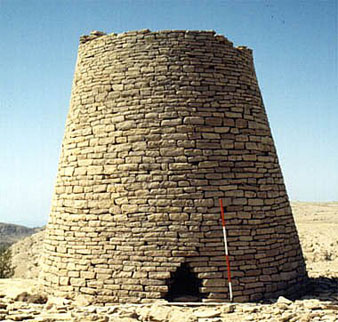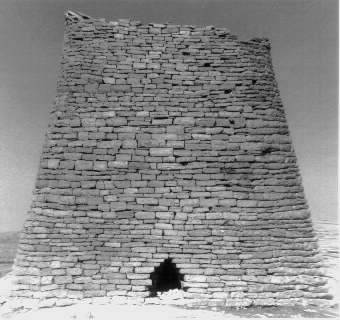German Archaeological Oman-Expedition
Institute für Prehistory and Near Eastern Archaeology and the German Mining Museum
 |
 |
Shir/Jaylah, Tomb Shi 1, conventional photograph |
Tomb Shi 1, photogrammetrically rectified photograph |
The mainstream of archaeology began in the Sultanate 25 years ago. Compared with the 150 year tradition of Europe and the Near East, relatively little is known about the archaeology of Oman. Despite the efforts of the Sultanate's Department of Antiquities, in this large country many archaeological monuments are undergoing intentional and unintentional destruction. This is usually the result of building construction. Throughout the accent of the Mission has been set on cultural resource management.
Since 1977 the German Archaeological Oman Expedition has carried out 16 campaigns of excavation and exploration. Efforts began with the investigation of the copper producing Magan/Makkan of the Sumerian and Akkadian cuneiform texts. Excavation began in Arja but in 1979 centred on al Maysar. Among the highlights belong survey and excavation on the island of Masirah in 1984. In 1987 the Samad Project began - the excavation of "Parthian" burial ground which revealed itself to date largely to the early medieval period. In 1995 the research centred on the tower tombs at Shir/Jaylah of the Umm an Nar Period. Since then the expeditions were devoted to a structuring of the Iron Age in the central and northern parts of the Sultanate. Excavation took place in al Maysar, in Raki/Yanqul as well as in Amla. The first two are settlements of the Early Iron Age and the second a cemetery of the late Pre-Islamic Period.
© Paul Yule; Kontakt / EMail

